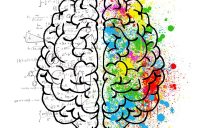 The interest and sensibility to innovate in the public sector around the world are growing, and the potential value that innovation has is being appreciated in public agendas.
The interest and sensibility to innovate in the public sector around the world are growing, and the potential value that innovation has is being appreciated in public agendas.
This international wave can be explained by the high complexity of problems that governments are facing and, often, these challenges find no solution in the traditional and departmentalized formulation of public policies.
Thinking about this trend, we can notice the emergence of a new form of organization within public institutions, known by several names like innovation labs, innovation spaces, innovation teams and so on. Innovation labs – the more common name – are a new institutional way of addressing complex public challenges. These spaces give the formulation of public policies and programs an injection of creativity and experimentation, with their processes designed in an iterative and collaborative way.
But what sets them apart from a traditional space? Public institutions that open their doors to innovation for this type of organization need to create resources, skills and physical spaces dedicated to supporting innovation. The adoption of experimental methods and other capabilities are also fundamental. So, here are five key elements that foster these innovation spaces:
1. Learning space architecture
In order for the innovation space to be effective, it is important that it offers some services and/or activities to the user. A well-structured action plan can make all the difference in the effectiveness of this space, becoming the reference of innovation in the institution itself.
At this stage it is worth thinking about some important points such as a value proposition of the space, define what problems it solves, address the new demands, bring the citizen closer to the public service, find partners and stipulate a service “menu.”
2. Physical space architecture
We know that the physical space greatly influences the way we work and, in this context specifically, it can be fundamental. More than thinking about what to put into this environment is thinking about how.
The disposal of the furniture and the format of the rooms are very important. The design of the space should provide collaboration, multidisciplinarity, easy access and flexibility to changes in the layout. These, combined with a pleasant and friendly visual, are good incentives for innovation.
3. Governance
Establishing the governance of the innovation space works so that it has credibility and “institutionality.” Rules of use of space, legal framework of operation and definition of productivity indicators are examples that strengthen the effective functioning of the space of innovation.
This is an important – but often forgotten – step that can enrich the use of space. For example, users from the innovation space could ”hang” their titles outside the door and use the space horizontally, and this could be a visual and simple process – like writing their job titles in a post-it and putting them outside the room.
4. Competencies
For the above elements to be delivered with quality to the user, it is important to foster some competences to be developed. Defining techniques, tools and formats for the accomplishment of the work within the space help in its operation. Mapping which competencies exist and which competencies need to be developed to make the space works are also a good point.
This can work not only with individual capacities but also related to themes that the space will provide. Design thinking and process design are examples of innovative themes that can be delivered from the space.
5. Communication
Finally, it is necessary to communicate the actions and functioning of this innovation space. Creating an identity – name, brand, logo – brings cohesion to what the environment proposes. Establishing a project communication plan, highlighting the promotion, dissemination and strategy of relationship with other areas of innovation are also important.
Do not forget to also think about mobilization campaigns and actions, create a visual presentation that explains the space and structure the best channels so that this communication is effective and reaches the largest number of users.
Ana Camerano is part of the GovLoop Featured Contributor program, where we feature articles by government voices from all across the country (and world!). To see more Featured Contributor posts, click here.





Leave a Reply
You must be logged in to post a comment.